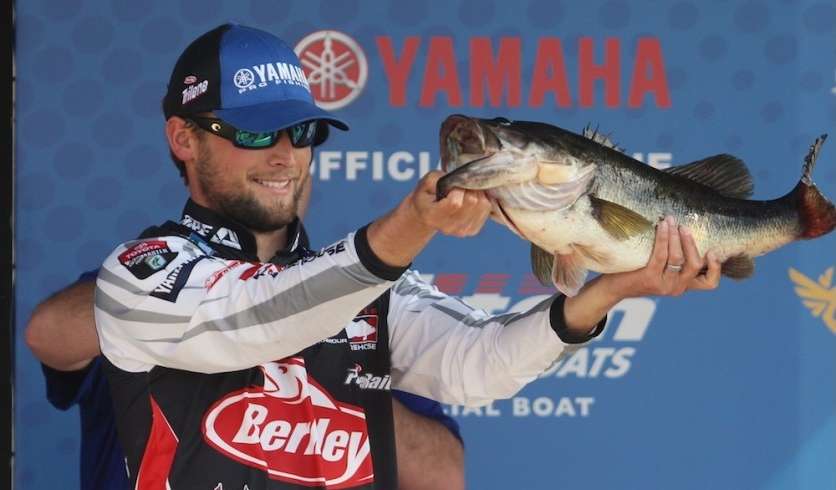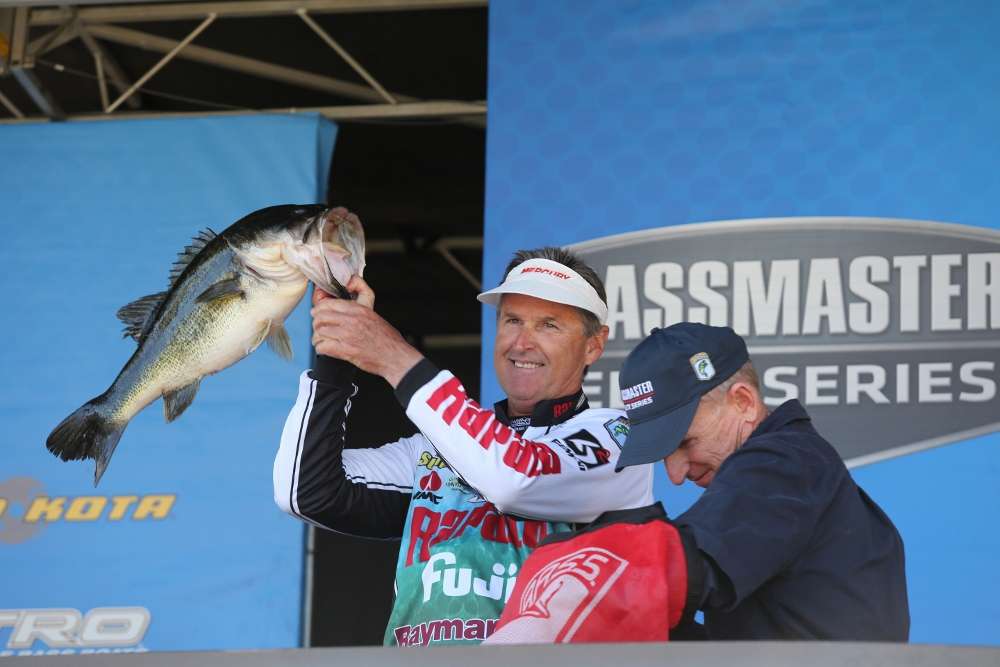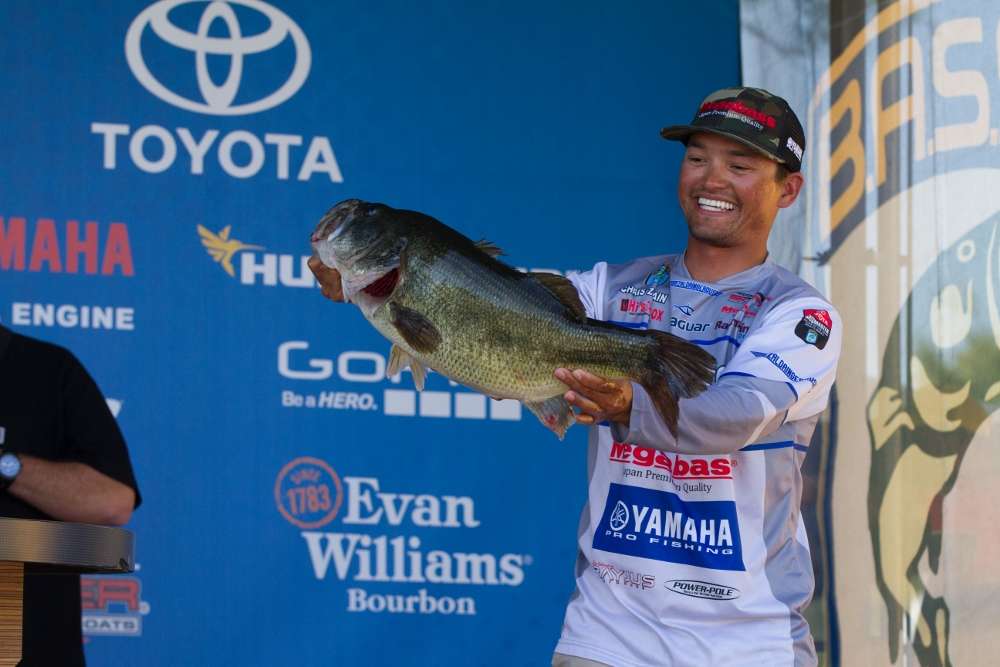
Over the years, fishing for freshwater bass has shifted from harvest for the dinner plate to catch and release. Conservation of black bass, particularly to protect trophy-size fish, is at the top of most anglers’ goals.
In an article by professional angler Bernie Schultz in April 2014 titled “How Not to Hold a Hawg,” Bassmaster.com highlighted the concerns of many anglers about “safe” and “unsafe” handling methods for large bass. Being a conscientious angler who cares about fish health, Schultz reached out to fisheries scientists for advice on safe handling practices. His questions started some discussion among scientists because, in fact, there was a lack of scientific research about whether different handling methods for bass can cause injury or mortality.

As a result, Mike Allen, a fisheries biologist from the University of Florida teamed with bass specialists from the Florida Fish and Wildlife Conservation Commission (FWC) and the Fisheries Conservation Foundation (FCF) to evaluate common handling methods and assess if and how they influenced bass feeding, growth and survival.
The FWC donated use of its hatchery facilities at the Florida Bass Conservation Center in Sumter County, Florida. They also provided use of 99 Florida largemouth bass brood stock ranging in weight from 2.5 to 8.5 pounds.
The objective of the study was to assess differences in recovery time, feeding behavior and mortality following exposure to one of three commonly observed handling practices: a vertical hold with a grip device; a tilted, fully horizontal grip by the lower jaw only; and a two-handed cradle.
A total of 30 bass were used for each experiment, 10 per handling style, and the full experiment was repeated three times. Fish were mildly anesthetized in the hatchery raceway prior to treatment in order to minimize self-induced injury when trying to evade net capture. Each time, a bass was chosen randomly and held out of the water for one minute in a given handling style. The one-minute time frame for handling exceeds the recommended duration for holding bass out of the water, but we wanted to maximize exposure to each handling method to compare the effects. Underwater cameras were used to observe the fish after it was subjected to one of the handling practices.
First, we evaluated the time it took for the fish to recover (that is, to regain equilibrium and no longer make any jaw adjustments). It turns out there were differences in recovery time among the handling treatments.
Bass in the two-hand, fully supported group recovered faster – on average, in less than 10 seconds, and within one minute at maximum. Fish in the tilted, fully horizontal group recovered within 12 seconds on average and within a minute and 36 seconds maximum, and the vertical group recovered within 33 seconds on average and six minutes maximum.

This indicates that holding fish in a two-handed, fully supported manner decreases the time it takes for fish to regain equilibrium. Violent head shaking and full jaw extension, which we categorized as major jaw adjustments, were observed only in the tilted, fully horizontal group, indicating short-term effects of the horizontal handling method on jaw function. However, we saw no evidence of permanent jaw damage or broken jaws as a result of the handling treatments. Feeding behavior was evaluated 48 hours following the handling treatment. Small prey, either bluegill or koi carp (2 to 4 inches), were introduced, and underwater video was used to determine prey-strike effectiveness and time to consume prey. We saw no difference in feeding success rates among handling treatments. Predatory chasing behavior was similar throughout the study. Thus, we found no evidence that handling method influenced feeding behavior.
Finally, after the feeding trials, the bass were moved to outdoor ponds for 30 days to be monitored for any potential delayed mortality as a result of handling. At the end of this term, they were recovered and transferred to a natural lake for the FWC’s Fish Orlando program. Mortalities did occur after transfer of the bass to the outdoor ponds — 12 percent of the total sample New symptoms of disease — for example, fungus around the eyes, top of the head and gills — were observed after 30 days in 8 percent of the remaining sample. These symptoms could be the result of the handling. However, there was no difference in the frequency of occurrence of these symptoms or in the number of mortalities among fish between the different treatments.
What did we learn? It was clear that fish in the two-handed, fully supported group recovered the fastest. The one-handed, jaw-only, horizontal hold caused the most disruption. It had a relatively moderate recovery time, similar to the supported hold, but required major head shakes and multiple jaw adjustments in many cases in order for the fish to right itself.
However, we saw no permanent jaw damage as a result of handling. The vertical grip had prolonged recovery times compared to the other two groups, but we saw no major head shakes or evidence of jaw damage.
It’s possible that bass in this study were not heavy enough to result in serious damage to the jaw musculature and bone. Certainly, the heavier a fish is, the more likely the chance of serious and permanent injury. However, we did have multiple fish over 6 pounds in each treatment, and fish up to 8.5 pounds. For fish in this size range, we saw no evidence of impaired feeding based on handling method.
In the end, there was no permanent injury or mortality that could be attributed directly to any specific handling practice. Trophy bass conservation requires us as anglers and biologists sampling bass or handling brood fish to minimize the potential for injury, damage and disease when handling fish.
As researchers, we will continue to evaluate these issues and try to provide the best scientific information possible to anglers who are concerned about the potential effects of handling practices on bass survival.
We would like to acknowledge all those who donated to fund this project via the RocketHub campaign “All about that bass,” including Oregon RFID, BassOnline.com, the North Toledo Sportsmen’s Club (Ohio), Downriver Bass Association (Michigan) and personal donors Craig Bonds, Eric Echols, Jim Ludden, Nick and Katie Sard, Craig and Deb Shaw, Andrew Shaw, Cory Suski and Ryan Swanson.
Michael Allen, Jordan Skaggs and Yasmin Quintana of the University of Florida contributed to this report, along with Nick Trippel, Mike Matthews and Wes Porak of the Florida Fish and Wildlife Conservation Commission.
Stephanie Shaw PhD, Biological Scientist at the University of Florida.
Originally published in B.A.S.S. Times




